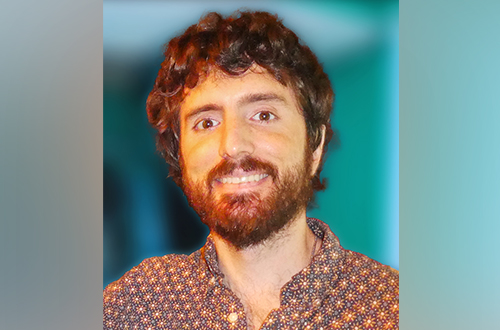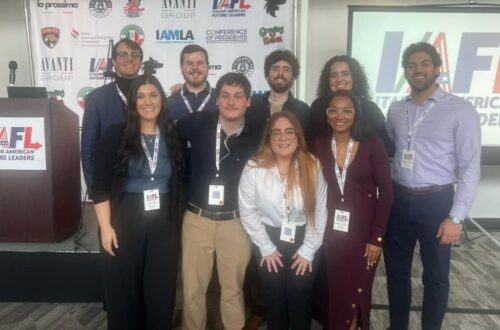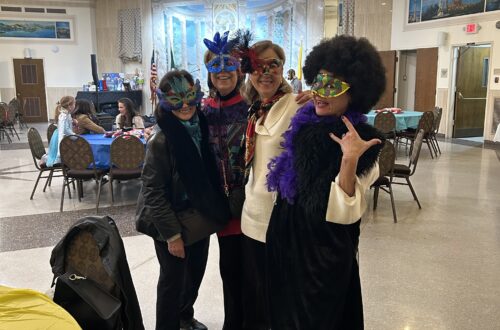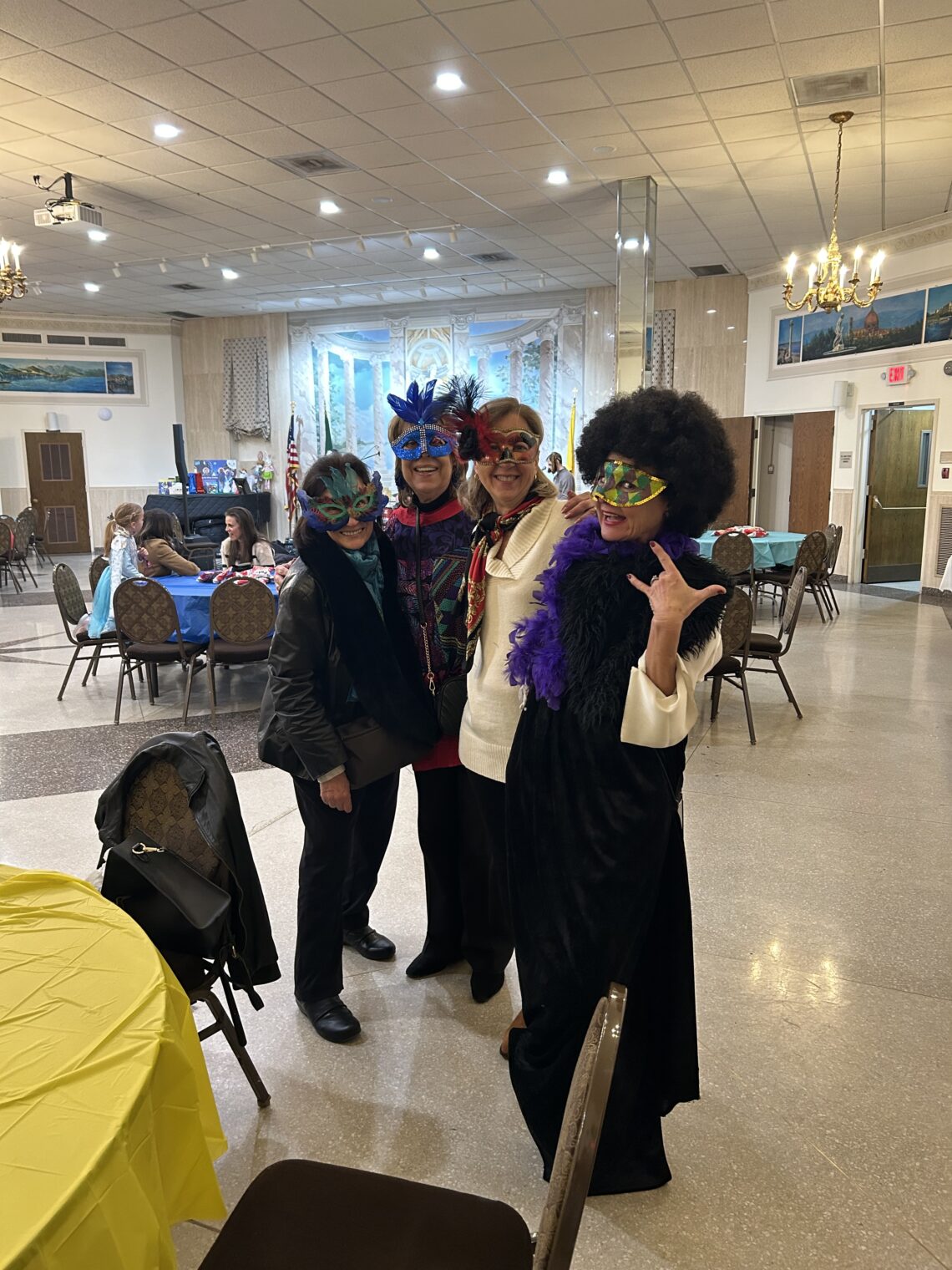-
A Message from the President
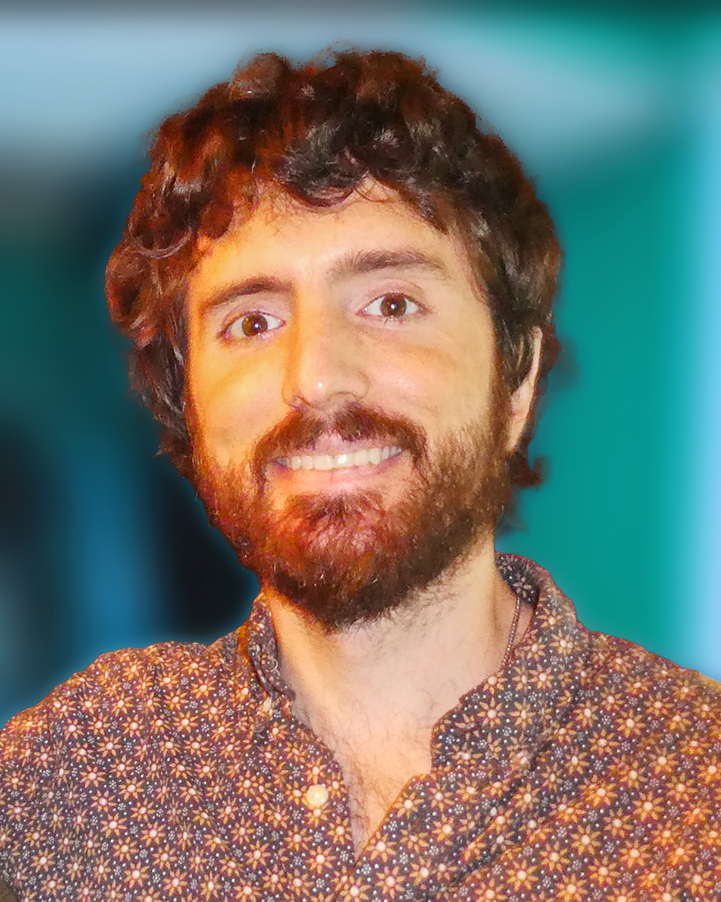
Greetings!
The year 2025 is the 25th anniversary of the founding of the Abruzzo and Molise Heritage Society! I am very proud of all we have accomplished over the last 25 years and the steps we are taking to make sure we will have a successful 25 more years.
In honor of this milestone, we are collecting the stories of our founding members and immigrant members from our regions. These stories will be used for an event later in the year. Also to celebrate our anniversary, we are creating a digital archive which will be accessible via our new webpage later this year.
In addition, we will be attempting to have two yearly events that highlight a unique element of Abruzzo or Molise. Our first regional event will be by past president Maria D’Andrea on the Transumanza/Tratturi. This event is not only a unique part of the patrimony of Abruzzo but also the last event before Maria relocates to Asheville, N.C. I would like to encourage everyone to make it to this event. We hope for this presentation to be one of our best attended events to send Maria off in a fitting celebration of our culture.
I would also like to welcome our two new board members, Natasha Rovo and Teresa Black. They have both already contributed much to the Society this year. In addition to serving on the board, Natasha is the chair of the publications, publicity, web site, & social media committee, and Teresa is the chair of the programs & hospitality committee. In addition, immediate past president Raymond LaVerghetta is the chair of the scholarship and fundraising subcommittees.
We have several happy hours, a hike, online events, and a May general meeting to look forward to.
I hope everyone has had a great new year so far, and I look forward to seeing you all soon!Chris Renneker
March/April 2025
-
A Joyful Carnevale
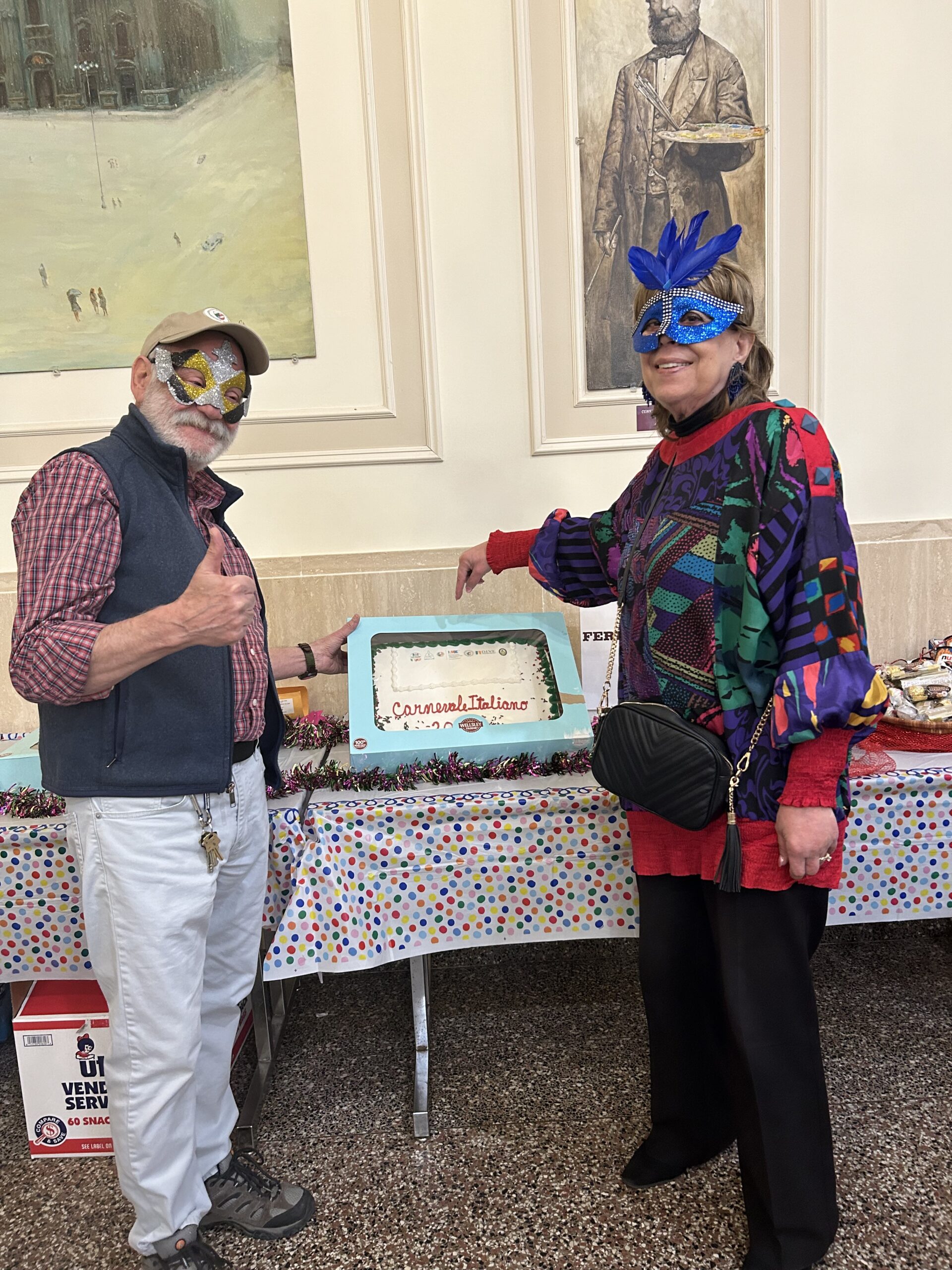
AMHS Treasurer Peter Bell and Nancy DeSanti with the Carnevale cake on which the logos of sponsoring organizations were on the icing. (Credit: Courtesy of Nancy DeSanti)
The AMHS was a co-sponsor of this year’s Festa di Carnevale Italiano celebration held at Casa Italiana on Sunday, February 23.
AMHS member Nancy De Santi, Director Natasha Rovo, and Treasurer Peter Bell attended as representatives of the Society. Nancy said, “It was a fun event — lots of pizza, prosecco, costumes, and fancy masks. A live Italian band played new songs and old standards like Volare (To Fly) and Tu Vuò Fà L’americano (You want to be American). There were about 200 in attendance and 95 on a waiting list. Most of the people there were Italian Americans.”
The emcee announced AMHS’s co-sponsorship of the event. Other sponsoring organizations were Casa Italiana Ente Promotore, Italians in DC, Italian-American Museum of DC, Le Dive, and the Lido Civic Club.
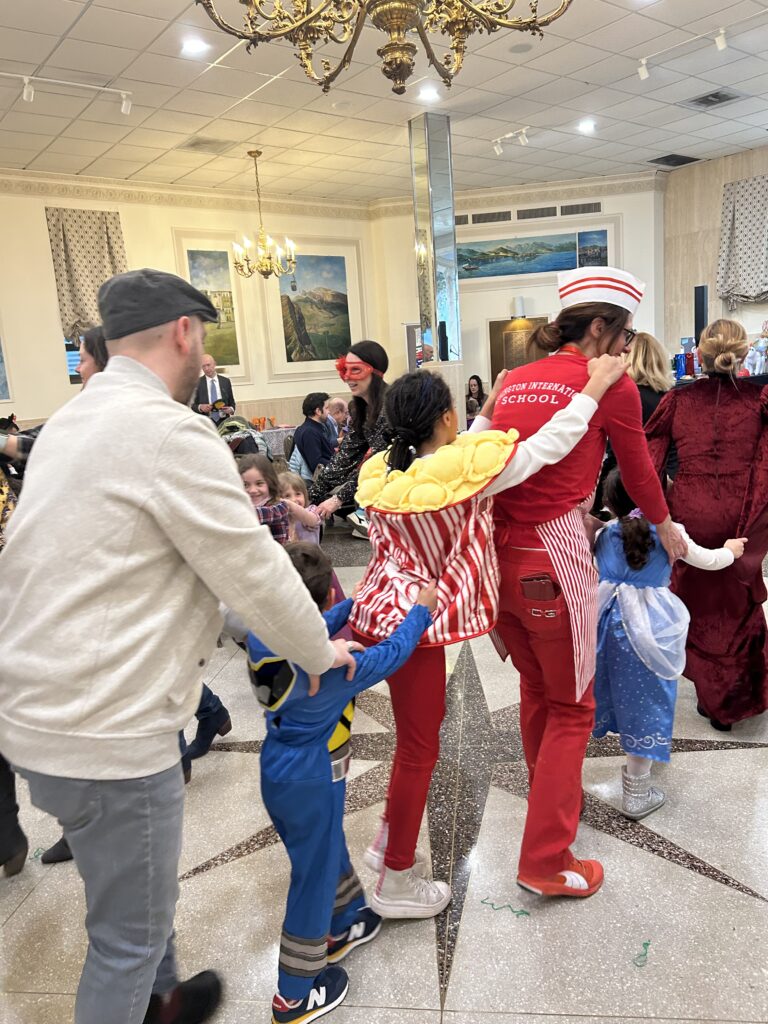
All ages danced to the lively music at the Carnevale. (Credit – Nancy DeSanti)
March/April 2025
-
The Future of Italian-American Leadership
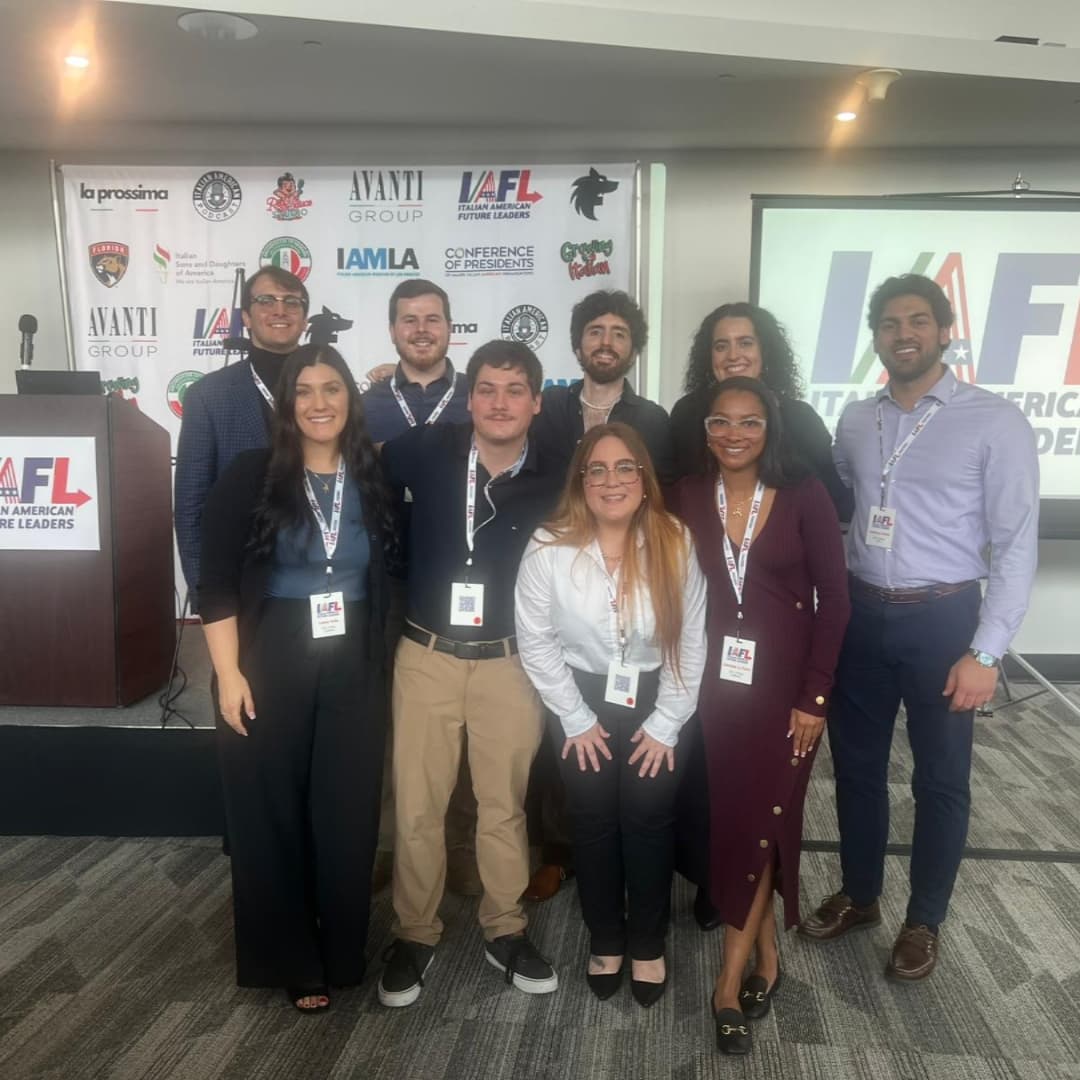
AMHS President Chris Renneker (back row, center) with his fellow IAFL participants. By Chris Renneker, President
This past January, over Martin Luther King Jr. weekend, I had the great pleasure to attend the Italian-American Future Leaders Conference as a fellow. This is an incredible event in its third year. It brings together hundreds of young Italian Americans from around North America to network and learn best practices to help bring Italian-American organizations into the future. It was basically like a normal conference.
During the conference, each attendee was assigned to a table. At my table, we had participants from California, Louisiana, New Jersey, Pennsylvania, Florida, and Ohio. Each table was given a series of tasks. Some of these were problem solving; others were content creation. We had breakout sessions, presentations, team-building exercises, talks on language and genealogy, networking, and lots of Italian food.
On the entertainment front, our first evening was a mixer. The event was held in the Florida Panthers pro hockey arena. We attended a game our second evening; they won handily. Our third evening was a farewell party where we had a big Italian karaoke show and the best food of the event.
The event was star studded. I got to meet Lena Prima, Pat O’Boyle, Tony Mangia, John Viola, Umberto Mucci, Cug from Meals with Cug, and the whole Growing Up Italian team. We also heard a very inspirational speech by Chazz Palminteri.
I was able to find and connect with people from the DC and Baltimore areas. We are all still in contact and have a group chat. Some of them have already joined our Society! Hopefully, the relationships formed at the event will pay dividends and help our Society over the long term. In particular, I would like to cooperate more with some of these other organizations regarding online events. If you recall, our Society had a great series of online events during the pandemic, but we have fallen away from them recently.
More than anything else, a key takeaway is that, although there are challenges, there are many young Italian Americans interested in leading our organizations and preserving our heritage into the future.
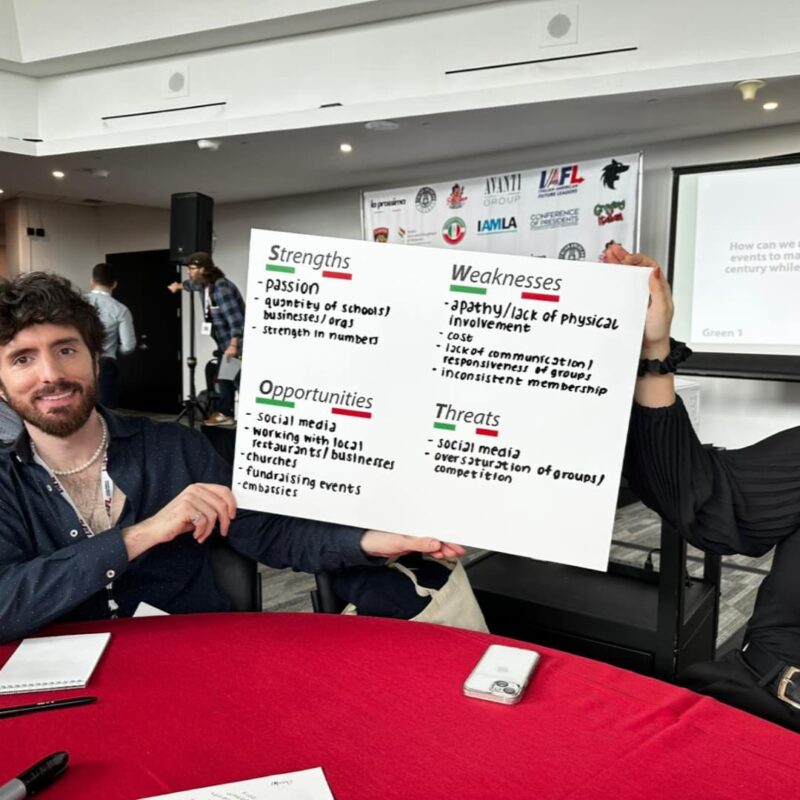
Chris holding a chart with some of the brainstorming ideas produced by the group.
March/April 2025
-
Former Secretary of State Mike Pompeo
By Joseph “Sonny” Scafetta, Jr.
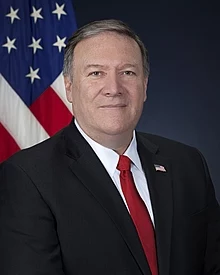
Michael R. Pompeo
Credit: WikipediaMichael Richard Pompeo was born in Orange, California, on December 30, 1963, to Wayne and Dorothy (Mercer) Pompeo. His paternal great-grandparents, Carlo Pompeo and Adelina Tollis, were born in the community of Pacentro (population 1,269 in the 2007 Census) in the province of L’Aquila in the region of Abruzzo. Carlo immigrated to the United States in 1899 and Adelina, in 1900.
Pompeo grew up in Santa Ana and was a forward on the varsity basketball team of the Los Amigos High School in Fountain Valley, California, before he graduated in June 1982. He then enrolled in the United States Military Academy at West Point, New York. He finished first in his class with a degree in engineering management in June, 1986. After graduating, he married Leslie Libert. They had no children and later divorced. Pompeo served in the U.S. Army, 2nd Squadron, 7th Cavalry, 4th Infantry Division, based in West Germany, first as an armor officer, then as a tank platoon leader, then as a troop executive officer, before becoming the squadron maintenance officer. He left with the rank of captain in June, 1991.
He applied to Harvard Law School and was admitted in September, 1991. As a student, he served as one of the editors of the Harvard Law Review and the Harvard Journal of Law & Public Policy. He received his Juris Doctor degree in June 1994 and was hired by the law firm of Williams & Connolly in Washington, D.C., where he worked mainly in tax litigation.
After two years, he left the firm to move to his mother’s home town of Wichita, Kansas, where he co-founded Thayer Aerospace with three West Point friends. He married his wife, Susan Justice Mostrous, in 2000. He adopted her son, Nicholas. In 2006, he sold his interest in the company to become president of Sentry International, an oil field equipment manufacturer.
In 2010, he decided to run for public office and was elected as a Republican to the House of Representatives in November. He was sworn in as the U.S. Representative for the 4th District of Kansas in January 2011. He was re-elected in November 2012, 2014, and 2016. During his tenure, he served on the Permanent Select Committee on Intelligence and the Intelligence Subcommittee on the Central Intelligence Agency (CIA).
President Donald J. Trump nominated him to be the Director of the CIA, and he was confirmed by the U.S. Senate by a vote of 66 to 32 on January 23, 2017. He was sworn in as the 6th Director later that day. After serving almost 14 months, he was nominated by President Trump to be the Secretary of State. The U.S. Senate confirmed him by a vote of 57 to 42 on April 23, 2018. He was sworn in as the 70th Secretary and the first Italian American to occupy the office three days later. In early October 2018, he embarked on a four-nation European tour. His first stop was Vatican City where he met with Pope Francis. He then traveled to his ancestral home town of Pacentro for a visit. During his tenure, Pompeo took a strong stance against the Islamic Republic of Iran. As a result, Iran threatened to assassinate him.
Pompeo resigned on January 20, 2021, when Joseph R. Biden Jr. was inaugurated as President. Nevertheless, Biden provided him with a federal security protection team after Pompeo left office. Initially, he became a distinguished fellow at the Hudson Institute, a conservative think tank in Washington, D.C. In January 2023, Harper Collins published Pompeo’s memoir of his tenure in the first Trump administration. Later in 2023, he became a director on the board of Cyabra, an Israeli counter-disinformation firm. In October of that same year, he became Of Counsel for the Texas law firm of Oberheiden, P.C.
When former President Trump was criminally charged with taking classified documents from the White House, Pompeo criticized Trump for doing so. As a result, when Trump was re-elected President in November 2024, he announced that Pompeo would not be appointed to any position in his second administration. Later, on January 23, 2025, three days after Trump was inaugurated for a second term, he revoked the government security protection for Pompeo. Consequently, Pompeo continues to practice law in Texas at the age of 61.Sources, all accessed January 24, 2025:
https://en.wikipedia.org/wiki/Mike_Pompeo
https://www.biography.com/political-figure/mike-pompeo
https://en.wikipedia.org/wiki/Pacentro
https://apnews.com/article/trump-pompeo
https://www.Hudson.org
Mike Pompeo meets the Pope in Rome, Daily Mail, October 3, 2019.
March/April 2025
-
Montenero Val Cocchiara

By Michael DeMarco
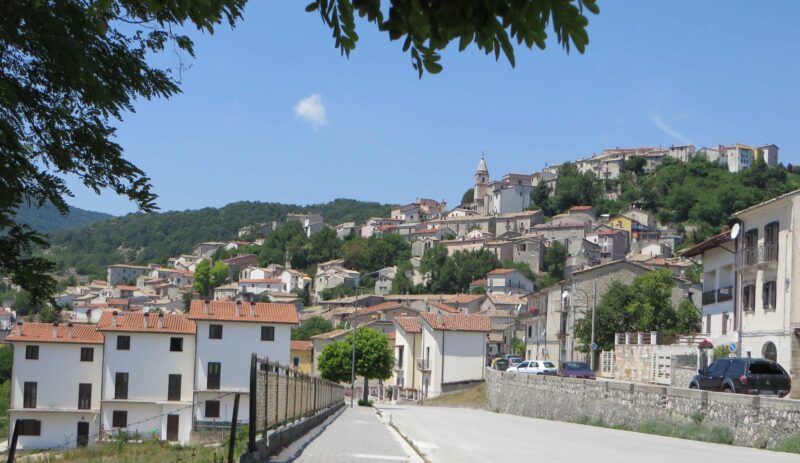
Province of Isernia , Region of Molise
Montenero Val Cocchiara, the name of the village, is nearly synonymous with the unique bread of a horse, the Pentro. These horses have galloped in the majestic spoon-shaped valley below Montenero (black mountain) for over 2,500 years. A summer rodeo entertained visitors every summer for 35 years, ceasing in 2006. Today, a wonderful way to immerse oneself in the natural beauty of the valley is to go horseback riding across the plain.
The valley, shaped like a spoon (val cocchiara), is a marshland (pantano) with the Zittola River traversing its length. The valley is about three miles long and as wide as a half mile at one end. It is home to abundant wildlife, including a large variety of butterflies and flowers. Migratory birds arrive from Africa across the Mediterranean Sea. In addition to the grazing horses and cows, there much more to see here. Bring your field guides for flora and fauna!
Original inhabitants settled along the pantano over a thousand years ago because of the great Abbey of Vincenzo al Volturno. The abbey needed a population to farm the land and to help protect it in case it was attacked, as it was by the Saracens in 881 CE. Now, Montenero sits on a hill with spectacular views over the valley and surrounding mountains offering it peace in its seclusion. The population peaked at 2,089 in 1901. As modernization approached the ancient agricultural town, the population dwindled to the present 480.
There are numerous activities in the village during the summer when the population doubles with those having ancestral roots arrive in the town, as well as sightseers. They enjoy walking along the medieval streets and visiting the prime architectural marvels. These sites include the Duke’s Palace that housed feudal lords, the Mannarelli Home, noted for its highly decorative carvings around its entrance, and the De Archangeles–Del Forno Palazzo which was built in 1691. One notices the ancient defensive planning for the village by the natural stone barriers and walls, particularly at the New Gate. There are even secret passageways to be used to escape if attacked by invaders or roaming bandits.
All visit the village’s Mother Church, Saint Maria of Loreto, which contains the relics of San Clemente, whose body arrived in 1776 from the catacombs of Saint Callisto in Rome. The festival for the patron saint commences annually on August 1st. The best artworks in Montenero can be seen in the churches. They include paintings, wooden sculptures, and elegant bronze and marble works. In the ornately carved choir loft of the mother church is an organ made in Naples in 1721. Adjacent to the church are two highlights: the bell tower and the multi-arched portico offering splendid views of the valley.
The festival of Saint Anthony is also important because he is the protector of animals. Animal husbandry was a major occupation for the villagers over the centuries. His festival on January 17th focuses around a large burning pyre in the main piazza where local food and beverage products are enjoyed into the night.
The local hangouts where people eat, drink, and chat are the bars, such as Caffe Lunik, Bar Madison, and the Roxy Bar, the later having the favorable location in the main piazza with a vista over the valley and mountains. The best cuisine is served at Casa Nuova Restaurant, serving specialized dishes and flavorful pizzas. Several fine home rentals and B&Bs are available.What to See
- Church of San Nicola of Bari, pre-1500
- Saint Maria of Loreto (original 1535) and bell tower
- De Archangeles–Del Forno Palazzo, 1691
- Church of the Blessed Virgin of Carmel, 1701
- Duke’s Palazzo, 1743
- Mannarelli Home, 1735
- Mannarelli building, 1751
- Pantano della Zittola (Zittola River wetland)
- Stations of the Cross along Via Crucis (made by the Pontificia Fonderia Marinelli)
- Medieval Portanova (New Gate) and old municipal piazza.
- Mulino Museum: a restored functional mill with displays particularly relating to farming.
Important Dates
- January 17: Festival of Saint Anthony (San Andun), protector of animals.
- August 1: Festival of the martyr San Clemente, the village’s patron saint.
Sources:
- DeMarco, M. (2020). Mundunur: A Mountain Village Under the Spell of South Italy. Italian edition (2022). Mundunur: Un Paese di Montagna Sotto L’incantesimo del Sud Italia. Santa Fe, NM: Via Media Publishing.
- DeMarco, M. (2024). To Give to the Light. Italian edition (2024), Dare alla Luce. Santa Fe, NM: Via Media Publishing.
- www.tuttitalia.it/molise/79-montenero-val-cocchiara/
March/April 2025
